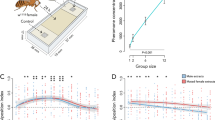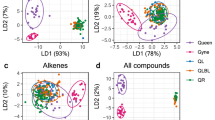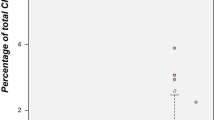Abstract
WHEN larvae of Ephestia kuehniella Zeller meet they deposit from their mandibular glands a pheromone that mediates a response to crowding1. In this communication I show that ovipositing female moths of E. kuehniella respond to the same secretion in such a way that the number of eggs they lay is related to the amount of the larval pheromone (and so to the density of the population of larvae) at the oviposition site.
This is a preview of subscription content, access via your institution
Access options
Subscribe to this journal
Receive 51 print issues and online access
$199.00 per year
only $3.90 per issue
Buy this article
- Purchase on Springer Link
- Instant access to full article PDF
Prices may be subject to local taxes which are calculated during checkout
Similar content being viewed by others
References
Corbet, S. A., Nature, 232, 481 (1971).
Calvert, I., and Corbet, S. A., J. Entomol. (A), 47, 201 (1973).
Mudd, A., and Corbet, S. A., Ent. Exp. Appl. (in the press).
Author information
Authors and Affiliations
Rights and permissions
About this article
Cite this article
CORBET, S. Oviposition Pheromone in Larval Mandibular Glands of Ephestia kuehniella. Nature 243, 537–538 (1973). https://doi.org/10.1038/243537a0
Received:
Issue Date:
DOI: https://doi.org/10.1038/243537a0
This article is cited by
-
The use of water traps and presence of spermatophores to evaluate mating disruption in the almond moth, Ephestia cautella, during exposure to synthetic sex pheromone
Journal of Pest Science (2013)
-
Aggregative Behavior is Not Explained by an Allee Effect in the Walnut Infesting Fly, Rhagoletis juglandis
Journal of Insect Behavior (2012)
-
10.1007/BF00301217
CrossRef Listing of Deleted DOIs (2011)
-
10.1007/BF00195569
CrossRef Listing of Deleted DOIs (2011)
-
Geraniol, E-3,7-dimethyl-2,6-octadien-1-ol, as the Alarm Pheromone of the Sycamore Lace Bug Corythucha ciliata (Say)
Journal of Chemical Ecology (2011)
Comments
By submitting a comment you agree to abide by our Terms and Community Guidelines. If you find something abusive or that does not comply with our terms or guidelines please flag it as inappropriate.



